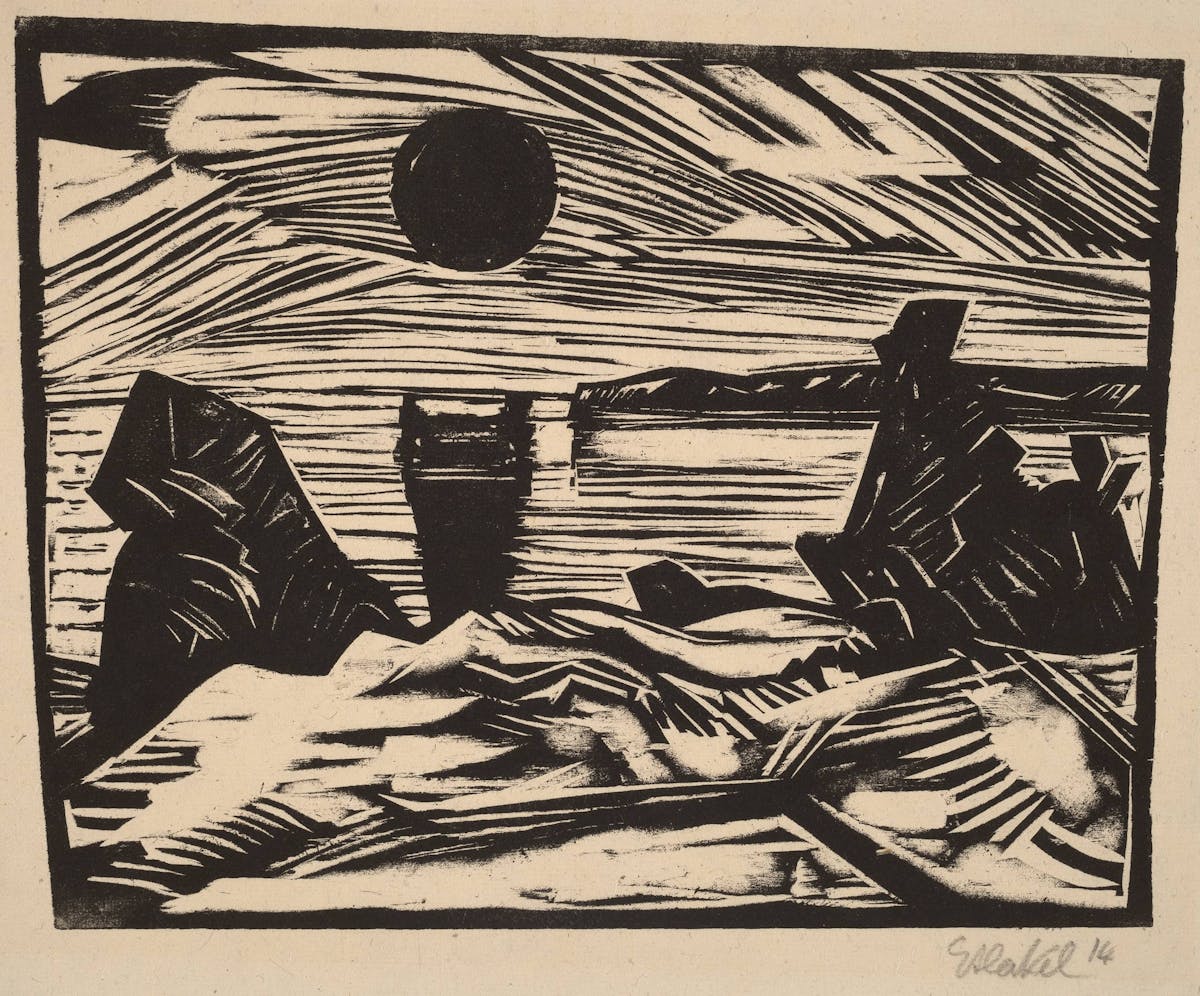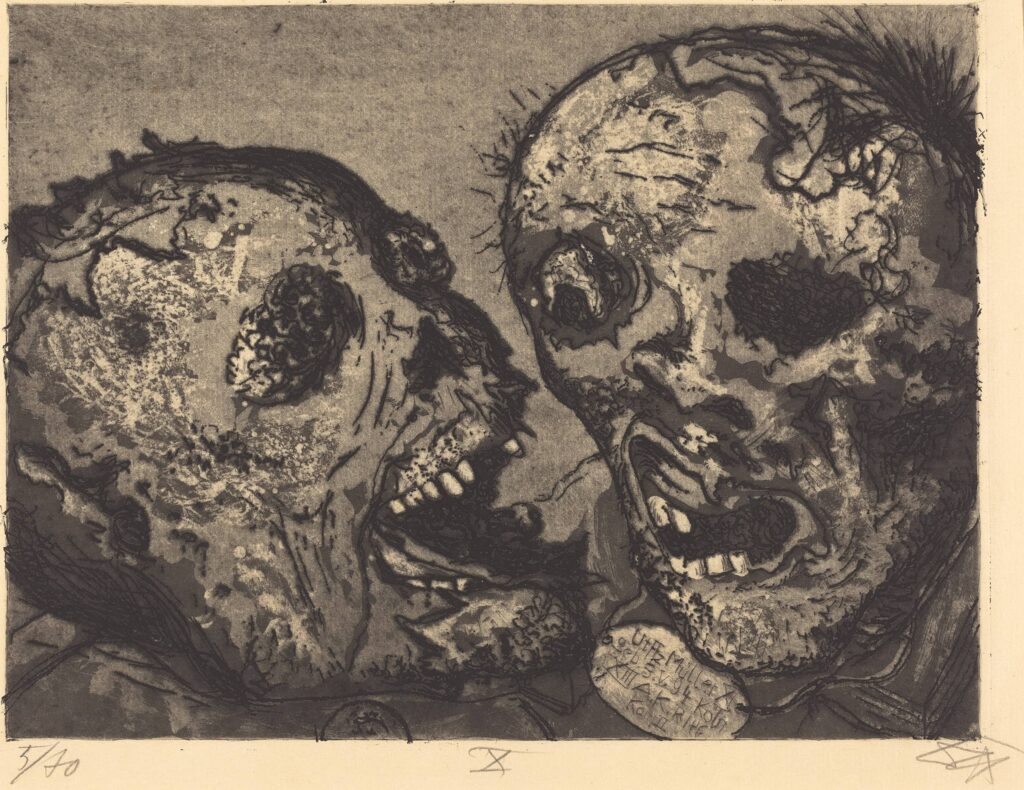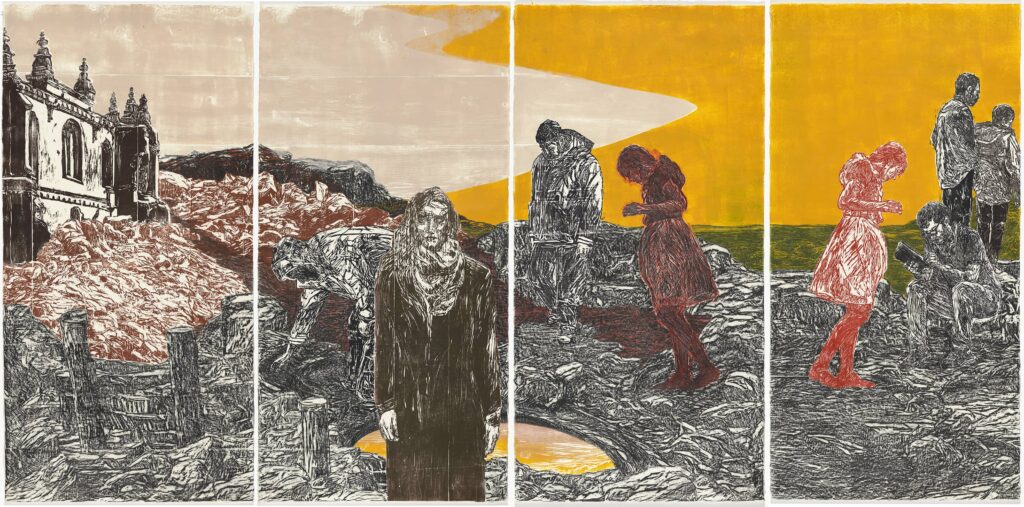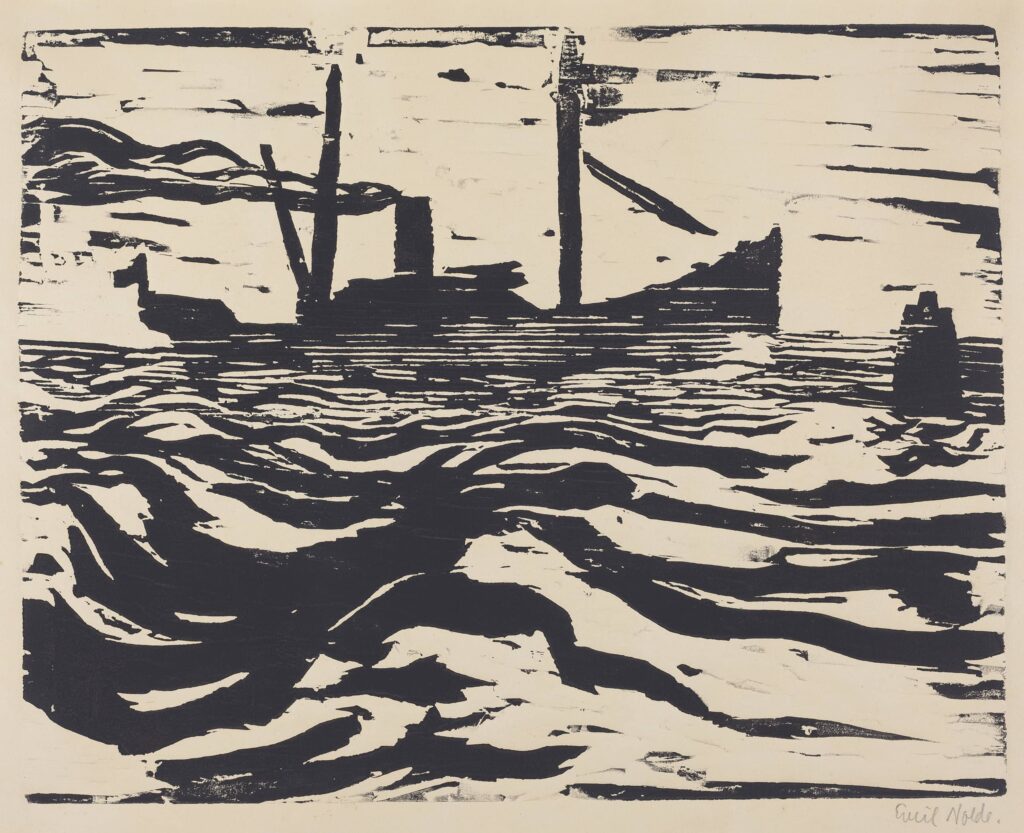Early Optimism Yields to Undiluted Draughts of Anguish in National Gallery’s Exploration of German Expressionism’s Legacy
The movement is embedded into our visual vernacular, particularly in our collective understanding of horror, pain, isolation and anxiety.

‘The Anxious Eye: German Expressionism and Its Legacy’
The National Gallery, Constitution Avenue, Washington D.C.
Through May 27, 2024
Among the emaciated figures, somber portraits, and crude experiments in primitivism, many of the characters in the National Gallery’s new exhibition of German Expressionist prints, drawings, sculptures and illustrations seem oddly familiar. The most obvious example is Erich Heckel’s “Siblings (Brother and Sister)” (1913) which looks like a pure blueprint for the famous monster in James Whale’s “Frankenstein” (1931).
Another work in the show, Water Gramatté’s “The Great Anxiety” (1918), calls to mind another member of the monster genre, Murnau’s vampire in his 1922 film “Nosferatu” (and, as it happens, bears an uncanny resemblance to Klaus Kinski’s Dracula in Herzog’s interpretation decades later). As shown in the final room of the exhibition, which explores the legacy of the movement, German Expressionism is embedded into our visual vernacular, particularly in our collective understanding of horror, pain, isolation and anxiety.

Indeed, it is one of the tragedies of the German Expressionist movement, particularly the artists associated with the small subgroup Die Brücke (a group well-represented in this exhibition) that, when the movement coalesced around 1912, it began in an optimistic — even idealistic — frame of mind. Expressionism was in large part a response to the overly-mechanized industrial age, promising a return to an approach to art that was freer, more honest, and more human-centric.
One can even see flashes of these utopian ideals at play in some of the works made before World War I, particularly the experimental scenes of bathers by Ernst Ludwig Kirchner and the rough-hewn yet satisfying woodcut water scenes by Erich Heckel and Emil Nolde. By the middle of the twentieth century, though, in the wake of the devastation and disillusionment of the World Wars, German Expressionism had become a byword for “basically the protest of a creature and society in anguish,” as Bernard Myers puts it.
The curatorial team puts this view of Expressionism front and center: one of the first works that confronts the “Anxious Eye” visitor is Otto Dix’s “Dead Men before the Position near Tahure” (1924), one of a series of nightmarish prints based on Dix’s memories as an artillery gunner in World War I.

Another undiluted draught of anguish, “The Prisoner” (1918) by Christian Rohlfs, is served up shortly after Dix’s ghoulish etching. The artists associated with Expressionism fared little better than their youthful hopes for cultural renewal: by the 1930s the Nazis had labeled most of them “degenerate” artists and stripped them of their privileges and positions in the art world. Kirchner, one of the optimistic founders of Die Brücke, killed himself in 1938 as a result of Nazi persecution; another artist in the exhibition, Paul Gangolf, died in a concentration camp.
Unsurprisingly, “The Anxious Eye” is really not an upper, except insofar as the artists represented have managed to discover new and effective means of conveying emotional and psychological experience, which after all, was one of the original intentions. A particularly successful development of the Expressionist movement was the re-discovery of different kinds of printing as cheap and effective means of artistic experimentation and output.
Of all the artistic traditions in Europe, printing had a particularly distinguished place in German art history. Great German masters such as Hans Holbein, Albrecht Dürer, and Lucas Cranach were prolific printmakers, and this exhibition offers a wonderful opportunity to see Expressionist re-interpretations of subjects that would have interested these artists and their contemporaries, as in “Christ Bearing the Cross” (1916) by Lovis Corinth, “Adam and Eve” (1920/1923) by Otto Mueller, and “Pietà” (1912) by Max Oppenheimer.

Woodcut printing in particular suited the preferences of the Expressionist artist: it forced compositional simplicity and essentialism while implicitly rejecting the mechanical sophistication so characteristic of the age. In the first room of “The Anxious Eye,” Käthe Kollwitz’s “Self-Portrait” (1923) confronts you with all the potency that woodcut printing affords, and at the very end of the show, it is revisited in a crescendo of technical prowess and psychological anguish by Leonard Baskin’s “The Hydrogen Man” (1954), offering a grim coda to the exhibition.
Another noteworthy characteristic of the Expressionist period is its fascination with the so-called primitive artistic traditions of Africa and the South Seas. This was evidence of Germany’s recent colonial acquisitions, but also came about in step with the wider artistic interest in tribal cultures manifest not only in Expressionism but Fauvism, Cubism, Surrealism, and Modernism.
This is particularly evident in Kirchner’s sculpture “Head of a Woman” (1913) and Heckel’s “Crouching Woman” (1913), two works that might be referring to the same individual, sporting a severe, Cleopatra-like haircut and improbably spherical breasts. As the curatorial team emphasizes, the artistic legacies of colonialism make for sensitive, complicated histories. One point of interest in this case is the fact that German artistic traditions skewed heavily towards the Gothic, as opposed to its classicizing French and Italian counterparts. Germanic art had, in a sense, maintained a primitive quality that the exposure to African and Pacific cultures reillumined and reinvigorated.
The themes of colonialism, war, genocide, cultural alienation and existential angst are revisited with alacrity in the final room of the exhibition, which features monumental works by both late twentieth century artists and contemporary voices. Several of these are woodcut prints on an impressive scale, illustrating how far materials and printing capabilities have come since the practice was revitalized in the early twentieth century.
Orit Hofshi’s “Time…thou ceaseless lackey to eternity” (2017) deserves special attention for its craftsmanship, as does Nicole Eisenman’s weird and fascinating etching, “Beer Garden” (2012-2017) where, when it comes to the history of art, it seems you can sample a little bit of everything.
Does this show offer a respite from contemporary malaise? Definitely not. But if you’d like to try a little immersion therapy, “The Anxious Eye” is on view until May 27. If at any point you feel overwhelmed, there’s always a little fresh air on the Main Floor (I find the works by Boucher and Watteau particularly salubrious).

